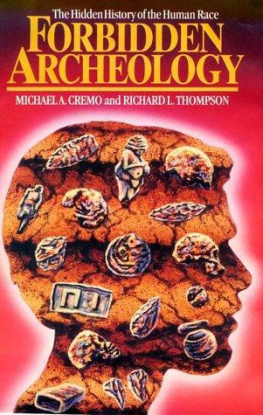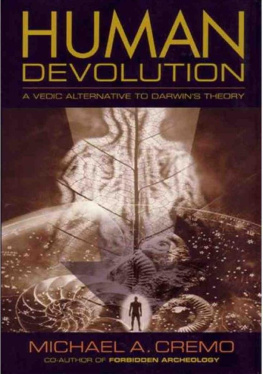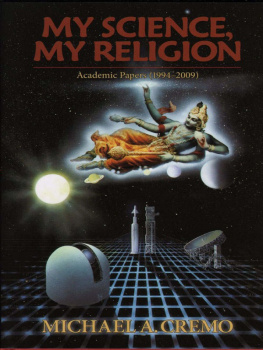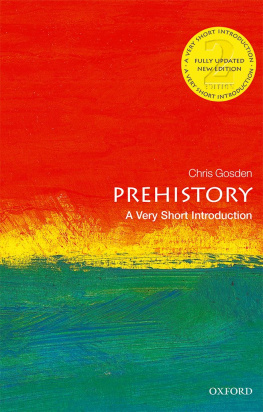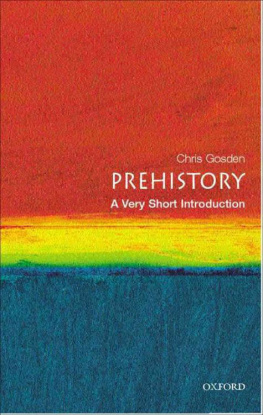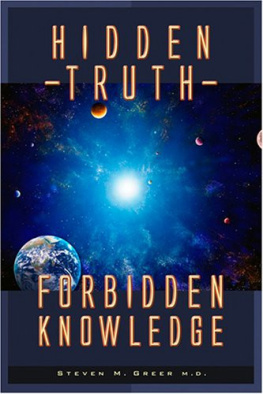Michael A. Cremo - Forbidden Archeology: The Hidden History of the Human Race
Here you can read online Michael A. Cremo - Forbidden Archeology: The Hidden History of the Human Race full text of the book (entire story) in english for free. Download pdf and epub, get meaning, cover and reviews about this ebook. year: 1996, publisher: Bhaktivedanta Institute, genre: Humor. Description of the work, (preface) as well as reviews are available. Best literature library LitArk.com created for fans of good reading and offers a wide selection of genres:
Romance novel
Science fiction
Adventure
Detective
Science
History
Home and family
Prose
Art
Politics
Computer
Non-fiction
Religion
Business
Children
Humor
Choose a favorite category and find really read worthwhile books. Enjoy immersion in the world of imagination, feel the emotions of the characters or learn something new for yourself, make an fascinating discovery.
- Book:Forbidden Archeology: The Hidden History of the Human Race
- Author:
- Publisher:Bhaktivedanta Institute
- Genre:
- Year:1996
- Rating:3 / 5
- Favourites:Add to favourites
- Your mark:
- 60
- 1
- 2
- 3
- 4
- 5
Forbidden Archeology: The Hidden History of the Human Race: summary, description and annotation
We offer to read an annotation, description, summary or preface (depends on what the author of the book "Forbidden Archeology: The Hidden History of the Human Race" wrote himself). If you haven't found the necessary information about the book — write in the comments, we will try to find it.
Forbidden Archeology: The Hidden History of the Human Race — read online for free the complete book (whole text) full work
Below is the text of the book, divided by pages. System saving the place of the last page read, allows you to conveniently read the book "Forbidden Archeology: The Hidden History of the Human Race" online for free, without having to search again every time where you left off. Put a bookmark, and you can go to the page where you finished reading at any time.
Font size:
Interval:
Bookmark:
Table of Contents
Foreword
I perceive in Forbidden Archeology an important work of thoroughgoing scholarship and intellectual adventure. Forbidden Archeology ascends and descends into the realms of the human construction of scientific fact and theory: postmodern territories that historians, philosophers, and sociologists of scientific knowledge are investigating with increasing frequency.
Recent studies of the emergence of Western scientific knowledge accentuate that credible knowledge is situated at an intersection between physical locales and social distinctions. Historical, sociological, and ethnomethodological studies of science by scholars such as Harry Collins, Michael Mulkay, Steven Shapin, Thomas Kuhn, Harold Garfinkel, Michael Lynch, Steve Woolgar, Andrew Pickering, Bruno Latour, Karin Knorr-Cetina, Donna Haraway, Allucquere Stone, and Malcolm Ashmore all point to the observation that scientific disciplines, be they paleoanthropology or astronomy, manufacture knowledge through locally constructed representational systems and practical devices for making their discovered phenomenon visible, accountable, and consensual to a larger disciplinary body of tradition. As Michael Lynch reminds us, scientists construct and use instruments, modify specimen materials, write articles, make pictures and build organizations.
With exacting research into the history of anthropological discovery, Cremo and Thompson zoom in on the epistemological crisis of the human fossil record, the process of disciplinary suppression, and the situated scientific handling of anomalous evidence to build persuasive theory and local institutions of knowledge and power.
In Cremo and Thompsons words, archeological and paleoanthropological facts turn out to be networks of arguments and observational claims that assemble a disciplines truth regardless, at times, of whether there is any agreed upon connection to the physical evidence or to the actual work done at the physical site of discovery. This perspective, albeit radical, accords with what I see as the best of the new work being done in studies of scientific knowledge.
Forbidden Archeology does not conceal its own positioning on a relativist spectrum of knowledge production. The authors admit to their own sense of place in a knowledge universe with contours derived from personal experience with Vedic philosophy, religious perception, and Indian cosmology. Their intriguing discourse on the Evidence for Advanced Culture in Distant Ages is light-years from normal Western science, and yet provokes a cohesion of probative thought.
In my view, it is just this openness of subjective positioning that makes Forbidden Archeology an original and important contribution to postmodern scholarly studies now being done in sociology, anthropology, archeology, and the history of science and ideas. The authors unique perspective provides postmodern scholars with an invaluable parallax view of historical scientific praxis, debate, and development.
Pierce J. Flynn, Ph.D.
Department of Arts and Sciences
California State University, San Marcos,
Calif., U.S.A.Introduction and Acknowledgments
In 1979, researchers at the Laetoli, Tanzania, site in East Africa discovered footprints in volcanic ash deposits over 3.6 million years old. Mary Leakey and others said the prints were indistinguishable from those of modern humans. To these scientists, this meant only that the human ancestors of 3.6 million years ago had remarkably modern feet. But according to other scientists, such as physical anthropologist R. H. Tuttle of the University of Chicago, fossil bones of the known australopithecines of 3.6 million years ago show they had feet that were distinctly apelike. Hence they were incompatible with the Laetoli prints. In an article in the March 1990 issue of Natural History, Tuttle confessed that we are left with somewhat of a mystery. It seems permissible, therefore, to consider a possibility neither Tuttle nor Leakey mentionedthat creatures with anatomically modern human bodies to match their anatomically modern human feet existed some 3.6 million years ago in East Africa. Perhaps, as suggested in the illustration on the opposite page, they coexisted with more apelike creatures. As intriguing as this archeological possibility may be, current ideas about human evolution forbid it.
Knowledgeable persons will warn against positing the existence of anatomically modern humans millions of years ago on the slim basis of the Laetoli footprints. But there is further evidence. Over the past few decades, scientists in Africa have uncovered fossil bones that look remarkably human. In 1965, Bryan Patterson and W. W. Howells found a surprisingly modern humerus (upper arm bone) at Kanapoi, Kenya. Scientists judged the humerus to be over 4 million years old. Henry M. McHenry and Robert S. Corruccini of the University of California said the Kanapoi humerus was barely distinguishable from modern Homo. Similarly, Richard Leakey said the ER 1481 femur (thighbone) from Lake Turkana, Kenya, found in 1972, was indistinguishable from that of modern humans. Scientists normally assign the ER 1481 femur, which is about 2 million years old, to prehuman Homo habilis. But since the ER 1481 femur was found by itself, one cannot rule out the possibility that the rest of the skeleton was also anatomically modern. Interestingly enough, in 1913 the German scientist Hans Reck found at Olduvai Gorge, Tanzania, a complete anatomically modern human skeleton in strata over 1 million years old, inspiring decades of controversy.
Here again, some will caution us not to set a few isolated and controversial examples against the overwhelming amount of noncontroversial evidence showing that anatomically modern humans evolved from more apelike creatures fairly recentlyabout 100,000 years ago, in Africa, and, in the view of some, in other parts of the world as well.
But it turns out we have not exhausted our resources with the Laetoli footprints, the Kanapoi humerus, and the ER 1481 femur. Over the past eight years, Richard Thompson and I, with the assistance of our researcher Stephen Bernath, have amassed an extensive body of evidence that calls into question current theories of human evolution. Some of this evidence, like the Laetoli footprints, is fairly recent. But much of it was reported by scientists in the nineteenth and early twentieth centuries. And as you can see, our discussion of this evidence fills up quite a large book.
Without even looking at this older body of evidence, some will assume that there must be something wrong with itthat it was properly disposed of by scientists long ago, for very good reasons. Richard and I have looked rather deeply into that possibility. We have concluded, however, that the quality of this controversial evidence is no better or worse than the supposedly noncontroversial evidence usually cited in favor of current views about human evolution.
But Forbidden Archeology is more than a well-documented catalog of unusual facts. It is also a sociological, philosophical, and historical critique of the scientific method, as applied to the question of human origins and antiquity.
We are not sociologists, but our approach in some ways resembles that taken by practitioners of the sociology of scientific knowledge (SSK), such as Steve Woolgar, Trevor Pinch, Michael Mulkay, Harry Collins, Bruno Latour, and Michael Lynch.
Each of these scholars has a unique perspective on SSK, but they would all probably agree with the following programmatic statement. Scientists conclusions do not identically correspond to states and processes of an objective natural reality. Instead, such conclusions reflect the real social processes of scientists as much as, more than, or even rather than what goes on in nature.
The critical approach we take in Forbidden Archeology also resembles that taken by philosophers of science such as Paul Feyerabend, who holds that science has attained too privileged a position in the intellectual field, and by historians of science such as J. S. Rudwick, who has explored in detail the nature of scientific controversy. As does Rudwick in The Great Devonian Controversy, we use narrative to present our material, which encompasses not one controversy but many controversiescontroversies long resolved, controversies as yet unresolved, and controversies now in the making. This has necessitated extensive quoting from primary and secondary sources, and giving rather detailed accounts of the twists and turns of complex paleoanthropological debates.
Font size:
Interval:
Bookmark:
Similar books «Forbidden Archeology: The Hidden History of the Human Race»
Look at similar books to Forbidden Archeology: The Hidden History of the Human Race. We have selected literature similar in name and meaning in the hope of providing readers with more options to find new, interesting, not yet read works.
Discussion, reviews of the book Forbidden Archeology: The Hidden History of the Human Race and just readers' own opinions. Leave your comments, write what you think about the work, its meaning or the main characters. Specify what exactly you liked and what you didn't like, and why you think so.

